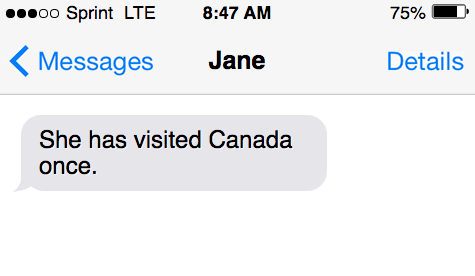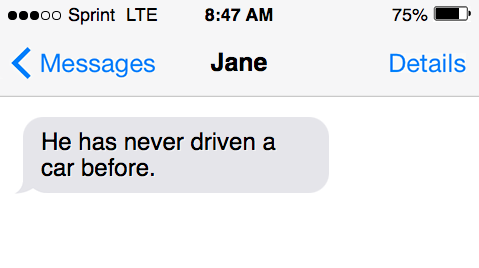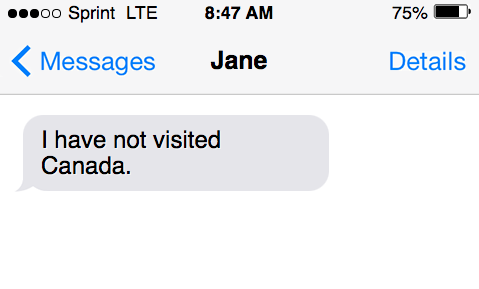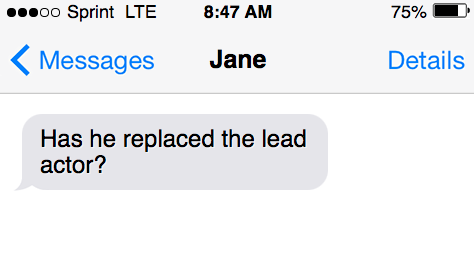Out of all the tenses in the English language, the present perfect simple is a difficult tense to understand. It can get challenging to comprehend because it connects the past and the present action at the same time.
To explain it further, here is a simple breakdown of the present perfect tense…
What Is Present Perfect Simple?
The present perfect simple tense is one of the tenses out of the twelve major verb tenses. The present perfect is a connection between the past tense and the present tense. It is used to say about an action that happened in the past, but its impact is still on (happening in the present). In other words, it is used to talk about a period of time that continues from the past until now.
| Tense | Definition |
| Present Perfect Simple | An action or situation that started in the past and continues in the present. |
For example, I can’t go on holiday now because I have broken my leg. It means:
I have broken my leg (in the past), so I cannot go now (present).
| Past simple | Present perfect |
| S + V-ed | S + have/has + V-ed |
| We lived in Japan from 1995 to 1998. | I’ve worked as a teacher since 2011. |
| I saw the Eiffel Tower in 2007. | I have seen the Eiffel tower. |
| First he read the book, and then he watched the movie. | She has already watched this movie 3 times. |
What are the other tenses?
In English, there are three basic tenses, and each tense is further divided into four tenses. In total, there are twelve major verb tenses. Here are the three basic tenses:
- Present
- Past
- Future
Each of these is further divided into:
- Simple Tense
- Continuous Tense
- Perfect Tense
- Perfect Continuous Tense
In total, there are 12 tenses, which are:
- The Simple Present
- The Present Continuous
- The Present Perfect Simple
- The Present Perfect Continuous
- The Simple Past
- The Past Continuous
- The Past Perfect
- The Past Perfect Continuous
- The Simple Future
- The Future Continuous
- The Future Perfect
- The Future Perfect Continuous
The table below explains each of these tenses with examples:
| Tense | Function | Rule | Example |
| Present simple | Helps to describe habits, facts, actions, and truth that are not affected by time | Ist form of verb + s/es | He loves pizza. |
| Past simple | Helps to describe events that have happened in the past | IInd form of the verb | She wore a beautiful dress for the party. |
| Future simple | Helps to describe events that will happen in the future | Will/ shall + Ist form | He will go to New York tomorrow. |
| Present perfect | Helps to describe the relevance of past events in the present moment | Has/ have + IIIrd form of the verb | I have learned to ride a bike. |
| Past perfect | Helps to describe events that happened prior to other events in the past | Had + IIIrd form of the verb | She had finished the paper before leaving the hall. |
| Future perfect | Helps to describe events that will be completed between now and a specific point in the future | Will/ have + IIIrd form of the verb | She will have finished the book by tomorrow. |
| Present continuous | Helps to describe ongoing actions | Is/ am/ are + Ist form + ing | “She is reading a book. |
| Past continuous | Helps to describe ongoing events of the past, mostly in relation to another event | Was/ were + Ist form + ing | He was driving to work when the accident happened. |
| Future continuous | Helps to describe future events that will/are expected to continue for a period of time | Will be + Ist form + ing | I will be going to meet my grandparents tomorrow. |
| Present perfect continuous | Helps to describe events that started in the past and will continue into the present | Has/ have been + Ist form + ing | She has been writing a book for the past one year. |
| Past perfect continuous | Helps to describe events that began, continued, and ended in the past | Had been + Ist form + ing | I had been working in this company for ten years when I got the promotion. |
| Future perfect continuous | Helps to describe events that began in the past but will continue until a point in the future | Will/ shall have been + Ist form + ing | I will have been doing business with her for one year. |
How is Present Perfect Simple Different From Other Tenses
To understand how present perfect simple is different, here is a comprehensive comparison between present perfect simple and a few other tenses like simple past and present perfect continuous.
Present Perfect Simple vs. Simple Past Tense
Here are the major differences between the two.
- In the present perfect simple tense, the action has taken place in the past but the result is in the present. On the other hand, in the simple past tense, the action has taken place in the past and ended in the past itself. There is no result in the present.
- The present perfect tense doesn’t specify a time period. It only indicates a period of time. For example: He has lived in New York for years. Here, the action has started in the past and is still continuing. The person is still living in New York. On the other hand, the simple past tense indicates a specific time. For example: He lived in New York for two years. Here the action started in the past and ended in the past itself. The person lived for two years in New York and is not living there anymore.
- Present perfect simple tense uses two verbs which are (has/have + past participle). In comparison, the simple past tense only uses one verb.
Present Perfect Simple vs. Present Perfect Continuous
Below are a few differences between the two.
- In the present perfect tense, the activity or action is in the past and the result is in the present. On the other hand, in the present perfect continuous, the action started in the past and is continuing in the present.
- Present perfect tense talks about a period of time. For example: He has lived here for a long time. In comparison, the present perfect continuous tense talks about an action that started in the past and is still continuing. Here, “since” and “for” time frames are extensively used. For example: He has been waiting here since 8 o’clock. This means the action of waiting started at 8 and is continuing.
- Present Perfect uses have/has + past participle(Verb3). On the other hand, Present perfect continuous uses have/has + been + present participle(V1ing).

How to Use Present Perfect Simple
The present perfect tense is used when:
- Emphasizing a result of a past action.
- An action that has started in the past but still continuing.
- An action that started in the past and has stopped recently.
- An action that has taken place in the past but the impact is in the present.
- An action that takes place once, many times, and has never taken place.
Here is a brief explanation of how to use present perfect in each of the above situations.
On a Result
The present perfect tense is used to emphasize a present result of a past action.
For example:
I can’t participate in the event because I’ve sprained my ankle.
Action That Is Still Ongoing
Present perfect is used to talk about an action that has started in the past and the action still continues in the present. In such situations, time frames like “for” and “since” are used in the structure of the sentence.

For example:
- She has lived in the US for several years.
- He has worked at the university since he graduated from college.
Action That Stopped
This tense is used when the actions have just stopped or just terminated. The word “just” is commonly used in such cases.

For example:
She has just finished her homework.
A Finished Action
In this situation, the action started sometime in the past and its result is seen in the present.
For example:
A gas leak has taken place in some households due to this the area is cordoned off. (The gas leak has taken place in the past as a result the area is now cordoned off.)

Action That Has Taken Place Once, Many Times, And Not At All
In such cases, words like ever, already, never, yet, so far, till now, and recently are used in the present perfect tense.
For example:
- She has visited Canada once.
- He has never driven a car before.
- I have seen this film many times.
Grammar Rules for Present Perfect Simple
- The basic formula of the present perfect tense is – has/have + past participle.
- The past participle is structured using “ed” or “d” at the end of the regular verb. In some cases, the past participle is formed using irregular verbs as well.
- The tense is constructed in a negative form also. The basic structure is – has/have + not + past participle.
- The present perfect is used in questions as well. To ask questions in this tense, use the structure – has/have + subject + past participle.
Refer to the table below for more rules.
| Present Perfect Simple Rule | Example |
| S + have/has + past participle | I have tried sushi. |
| s + have not (haven’t/has not (hasn’t) + past participle | I have not tried sushi. |
| Have/has + subject + past participle (question) | Have you tried sushi? |
Examples of Present Perfect Simple
Here are examples of present perfect simple tense in sentences.
Regular Verb
He has worked with the team for many years. (Has + regular verb (worked))

Irregular Verb
She has broken her leg. (Has + irregular verb (broken))

Negative Form
I have not visited Canada. (Have + not + past participle (visited))

Question Form
Has he replaced the lead actor? (Has + subject(he) + past participle (replaced))
Contractions
I’ve played that sport many times. (I have -> I’ve which is a contraction)
| Subject | Have/has | Verb (past participle) | Remainder of sentence |
| I | have | seen | this movie. |
| You | have | seen | this movie. |
| He | has | seen | this movie. |
Sources
- What Is the Present Perfect Tense? Definition and Examples | Grammarly
- English Tenses – Speak Error-free and Fluent English
- Present perfect vs simple past |EF| Global Site
- Present Perfect Vs Past Simple: Learn the key differences
- Difference between the present perfect and present perfect continuous
- Use of the present perfect simple tense in English
- Present Perfect Tense: How and When to Use It – Magoosh Blog
Inside this article
Fact checked:
Content is rigorously reviewed by a team of qualified and experienced fact checkers. Fact checkers review articles for factual accuracy, relevance, and timeliness. Learn more.
Core lessons
Glossary
- Abstract Noun
- Accusative Case
- Anecdote
- Antonym
- Active Sentence
- Adverb
- Adjective
- Allegory
- Alliteration
- Adjective Clause
- Adjective Phrase
- Ampersand
- Anastrophe
- Adverbial Clause
- Appositive Phrase
- Clause
- Compound Adjective
- Complex Sentence
- Compound Words
- Compound Predicate
- Common Noun
- Comparative Adjective
- Comparative and Superlative
- Compound Noun
- Compound Subject
- Compound Sentence
- Copular Verb
- Collective Noun
- Colloquialism
- Conciseness
- Consonance
- Conditional
- Concrete Noun
- Conjunction
- Conjugation
- Conditional Sentence
- Comma Splice
- Correlative Conjunction
- Coordinating Conjunction
- Coordinate Adjective
- Cumulative Adjective
- Dative Case
- Determiner
- Declarative Sentence
- Declarative Statement
- Direct Object Pronoun
- Direct Object
- Diction
- Diphthong
- Dangling Modifier
- Demonstrative Pronoun
- Demonstrative Adjective
- Direct Characterization
- Definite Article
- Doublespeak
- False Dilemma Fallacy
- Future Perfect Progressive
- Future Simple
- Future Perfect Continuous
- Future Perfect
- First Conditional
- Irregular Adjective
- Irregular Verb
- Imperative Sentence
- Indefinite Article
- Intransitive Verb
- Introductory Phrase
- Indefinite Pronoun
- Indirect Characterization
- Interrogative Sentence
- Intensive Pronoun
- Inanimate Object
- Indefinite Tense
- Infinitive Phrase
- Interjection
- Intensifier
- Infinitive
- Indicative Mood
- Participle
- Parallelism
- Prepositional Phrase
- Past Simple Tense
- Past Continuous Tense
- Past Perfect Tense
- Past Progressive Tense
- Present Simple Tense
- Present Perfect Tense
- Personal Pronoun
- Personification
- Persuasive Writing
- Parallel Structure
- Phrasal Verb
- Predicate Adjective
- Predicate Nominative
- Phonetic Language
- Plural Noun
- Punctuation
- Punctuation Marks
- Preposition
- Preposition of Place
- Parts of Speech
- Possessive Adjective
- Possessive Determiner
- Possessive Case
- Possessive Noun
- Proper Adjective
- Proper Noun
- Present Participle
- Prefix
- Predicate



